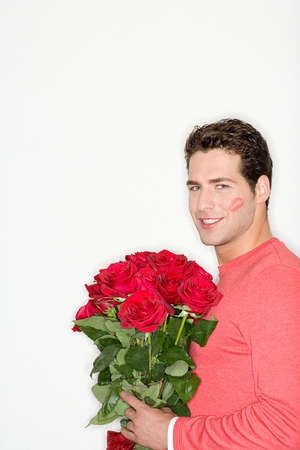
Crystal therapy is an alternative healing method that uses gemstones and crystals to induce healing. Critics of crystal therapy consider it to be a pseudoscience that uses unscientific methods. Healing, if any at all, is attributed to the placebo effect. Proponents of vibrational medicine, however, regard crystal therapy as a powerful, yet subtle, healing method that utilizes crystalline structures of various minerals to alter the energy patterns within the human body.
Crystal therapy takes a holistic approach to health and disease. Any disturbance of energy flow within the body results in disease and must be corrected. When balance is restored, healing occurs not only on the physical, but also on the emotional and spiritual planes.
Gemstones and crystals fascinated humans in most ancient cultures. Their beauty had a magical appeal. Their rarity elevated them to the symbols of wealth and status. In most ancient cultures they were used in magic rituals, in divination, for healing, and for protection of the living and the dead. They were offered to the gods, used as gifts or as currency, and worn as jewelry.
The first known written reference to the healing properties of crystals, however, comes form an ancient Egyptian papyrus that dates back to around 1550 BC. Lapis lazuli, malachite, and red jasper were to be placed around the neck of a sick person so that the disease could pass through the crystals and then dissipate.
Crystals were mentioned in the Old Testament. The High Priest Aaron wore a breastplate that was adorned with various jewels. They were the symbols of wisdom and were worn for protection.
Sumerians, ancient Egyptians, Greeks, and the Romans, learned how to use gemstones and crystals in magic formulas and for healing. Gems, especially the green jade, were used by the Chinese thousands of years ago. Around 400 BC, the Indians began using crystals in Ayurveda. Their healing properties were also known to the Hopi Indians, the Inuit, and to the Hawaiian Islanders. Australian Aborigines and New Zealand Maoris, Aztecs and the Maya, all used crystals for healing. Interestingly enough, all these cultures attributed similar properties to the same gemstones.
In Europe gemstone therapy was popular during the Middle Ages and the Renaissance. A number of medical treatises extolled the healing properties of various gems and crystals. Hildegard of Bingen, Sir John Mandeville, and Arnoldus Saxo used gemstones together with herbs. This practice was forgotten with the onset of the Age of Reason, but revived in the 19th century with the ascent of Spiritualism and the revival of ancient esoteric traditions.
The efficacy of crystal therapy is based on the premise that every living organism constitutes a complex energy system which includes meridians, chakras, and the electromagnetic field known as aura.
Every crystal or gemstone has a different crystalline structure with atoms placed on the crystal lattice in a particular order. The atoms oscillate forming a specific energy pattern. These patterns resonate with the vibrational energies of somatic cells, thus tuning and re-balancing the energy flow in the entire body. A balanced energy flow is a sign of perfect health. Because energetic re-balancing takes place on cellular level, healing is gradual and may take longer periods of time depending on an individual condition.
During a healing session, gemstones and crystals are placed on a body in a special configuration. They work in synergy to enhance the energy flow and to open the energy blockages. More than one session is necessary, especially when energy imbalance manifests itself as a physical symptom or a disease.
The stones can also be placed in homes and other spaces, and carried in pockets or worn on the body during the day for a continuous exposure to the subtle energy of the healing stones.
The practice of wearing gemstones or placing them on various parts of the body is only one form of therapeutic application of crystals. Preparation of gem elixirs is another.
Gemstone elixirs can prepared to heal wide range of ailments. Cleansed, mostly raw, unpolished gemstones and crystals are placed in a jar of purified water and left for a designated period of time. The water is then consumed for enhanced energetic balancing and detoxification. Elixirs not only use the energetic properties of crystals, but they also take advantage of their mineral content.
Traditionally, pulverized gemstones and crystals were also added to ointments and applied on areas that needed attention. To this day, the Chinese use pulverized pearls in their skincare products.The famous Pearl Cream is believed to have almost miraculous anti-aging properties.
The human body has an incredible potential to heal itself. Vibrational therapies such as chakra balancing or the crystal therapy may not yet be scientifically confirmed, healing effect is considerable when such methods are applied to correct energetic imbalances in the body. And although the possible placebo effect does not necessarily discredit these healing methods, a caution is advised.
By Dominique Teng
Dominique Teng©2011
*This article was written for educational purpose only and is not meant to diagnose, treat or cure a disease.








